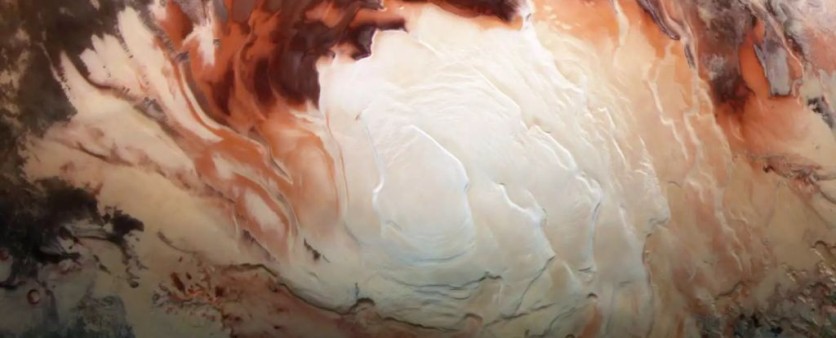What scientists previously thought to be lakes of liquid water beneath Mars' southern polar ice cap may actually be plain old rock, according to a report by ScienceAlert.
According to a new analysis, geological layering could have also produced the brightly glowing radar signal that was thought to represent subterranean water on the red planet.

Unraveling the Enigmatic Signal
A few years ago, the enigmatic signal was discovered for the first time in radar data gathered by the Mars Express satellite probe of the European Space Agency.
Scientists discovered a piece of material that reflected light in an extraordinarily bright way there, hidden beneath the southern polar ice cap of Mars.
Subsequent searches revealed additional brilliantly glowing subsurface patches, proving that the initial patch wasn't the only one present in the area, as per ScienceAlert.
These bright spots had also been discovered on Earth, at the South Pole, hidden beneath the ice. These are the subglacial lakes that form a system of liquid reservoirs beneath the Antarctic ice.
Scientists concluded that there might be comparable liquid reserves on Mars as a result of this. The only problem is that liquid water isn't thought to exist on Mars since it's too cold, pressurized by ice, and has a lower freezing point due to the presence of salts.
Astronomer Dan Lalich of Cornell University colleagues conducted simulations employing a layering of four materials that are known to exist on Mars to perform their investigation.
Read also: Garbage on Mars: Over 15,000 Pounds of Human Trash Pile up on the Red Planet, Researcher Says
Performing the Investigation
Ground-penetrating radar bounces radio waves off a surface or objects to penetrate it. The characteristics of the materials beneath a planet's surface are revealed by how long it takes for those radio waves to be reflected and how forcefully they are reflected, according to ScienceAlert.
The scientists modeled different configurations and thicknesses of layers of water ice, carbon dioxide ice, basalt, and atmosphere, each having characteristics that reflect radar pulses in different ways.
The signals that these configurations would create were then calculated. The result was a layer of dusty water ice in between two layers of carbon dioxide ice, which was just as bright as the Mars Express findings.
Lalich said that they used CO2 layers embedded in the water ice because it exists in large quantities near the ice cap's surface.
ScienceAlert noted that this is not the first suggestion that the shimmering signal may have been produced by something else instead of liquid water. Another research earlier this year suggested volcanic rock as a source, while a team discovered last year that frozen clays provide the same amount of radar shine.
However, Lalich said that their research does not disprove the possible presence of liquid on Mars. He argues that the interference hypothesis is more consistent with other observations.
He adds, " I'm not sure anything short of a drill could prove either side of this debate definitively right or wrong."
ScienceAlert said that this is unlikely to occur any time soon, considering the depth of the patches, the distance to Mars, and the challenge of moving equipment on the planet, such as drilling machines.
Related Article : NASA's James Webb Space Telescope Zooms in on Mars for the First Time, Capturing Stiking Martian Details!
This article is owned by Tech Times
Written by Joaquin Victor Tacla
ⓒ 2025 TECHTIMES.com All rights reserved. Do not reproduce without permission.




